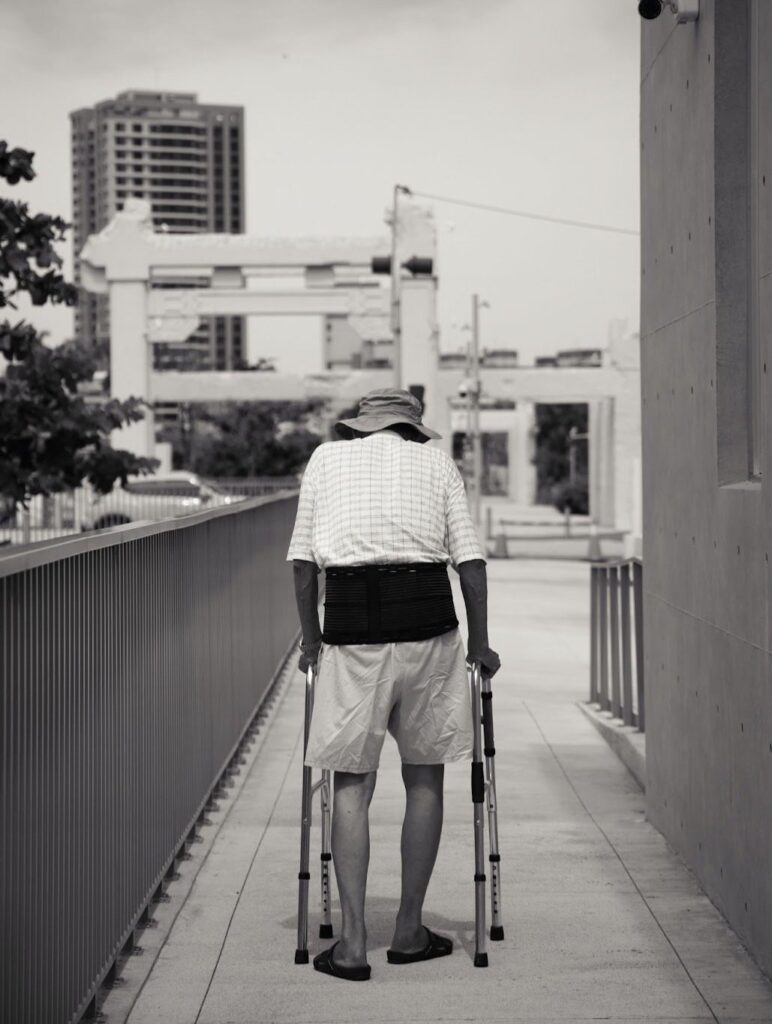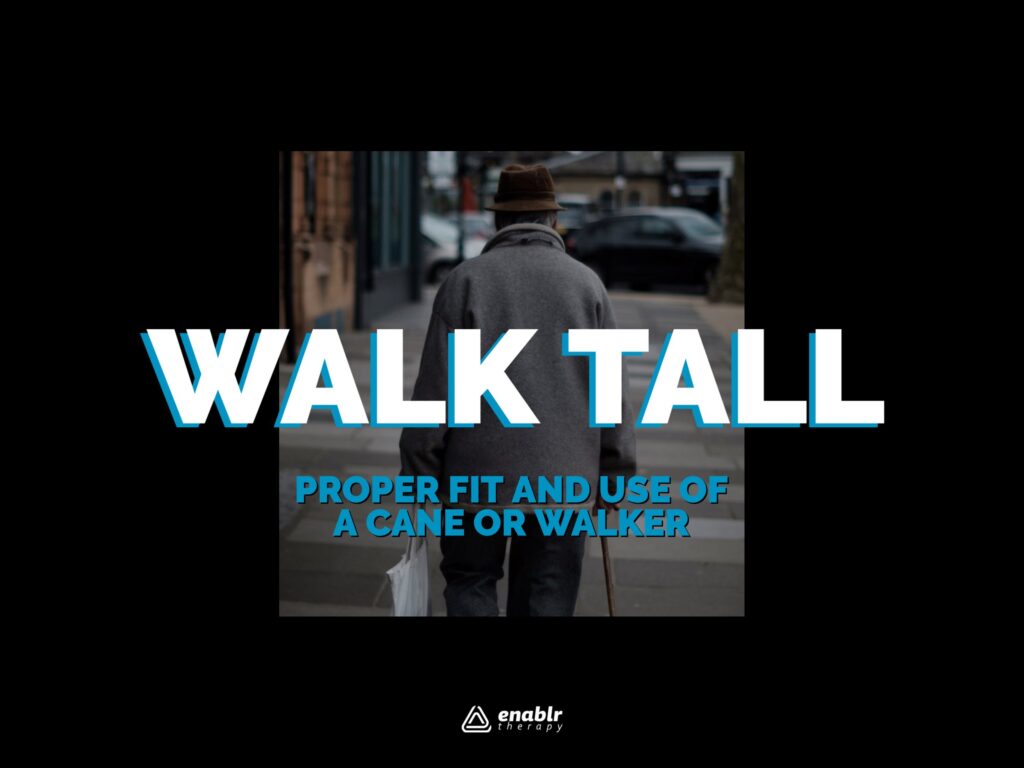
Walking devices such as, canes or walkers, can be very useful in providing needed support and balance, giving freedom of movement and independence. However, it is important to ensure that a walker or cane device has been fitted properly to promote posture, balance, and stability. Devices that are ill-fitting can lead to increased fall risk, pain, and energy/effort requirements. Below are tips for fitting and using walking devices properly.
Cane Fit
To set the cane height, hold your arm straight at your side. The top of the cane should align with the wrist crease. When holding a cane in hand, there should be a slight (about 15-20 degree) bend in the elbow. Be sure to select a cane with a grip that is comfortable and check that the rubber tip is in good shape.

Walking With A Cane
The cane should be held on your stronger side, opposite the weak or painful affected leg. Move the cane forward when you move the weaker/painful leg forward. The cane will then give support as you shift forward and put weight onto the affected leg so that you can lift and take a step with your stronger leg.
Using Stairs With A Cane
Use railing when possible in addition to the cane.
When Going Up the Stairs
Place your stronger (good) leg on the step first, then bring your weaker/painful leg and the cane onto the step. This reduces the stress on the affected leg.
When Going Down the Stairs
Do the opposite. Go down the stairs with your affected (bad) leg and cane first and then step down with your stronger leg. An easy way to remember this technique is by “The good go to heaven (up with the good leg first) and the bad go to ‘h-e-double hockey sticks’ (down with the bad leg first).”
Standard Walker Fit
To fit a walker, stand inside of the walker and hold your arms straight at your side. The top of the walker grips should align with the wrist creases. Elbows will be bent about 15-20 degrees when grasping the walker. Be sure to select grips that are comfortable and ensure that tips or wheels on the walker are in good shape. When standing with the walker, the individual should not need to slump or hike up their shoulders in order to hold the walker.
Walking With A Walker
Move the walker forward about one step. Do not move it so far ahead that hunching occurs. Take one step with the weaker, or painful, leg into the middle of the walker. Push down on the walker handles as you bring the other leg forward. Be sure just to step to the middle of the walker. Do not touch the front bar of the walker.
If you do not have a weak or painful leg, you can step forward with whichever leg feels most comfortable and natural. A regular cadence of moving the walker, step, and step should be developed. A walker bag or tray can be helpful in transporting items when walking so that both hands are free to hold the walker securely.
Note: It is important to avoid pulling on a walker when trying to stand up from a seated position. Instead, push off of the chair to come to a standing position. The walker only provides stability from a standing position.




